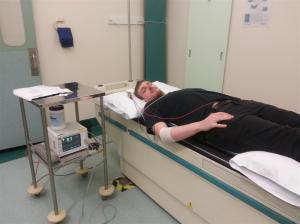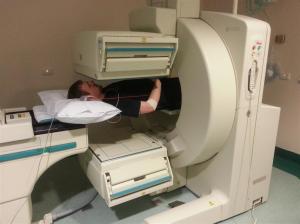RNVG (GBPS) Scan (I… don’t know how to give this a funny title…)
I started chemo on the 14th of November – 13 days ago. You can expect a detailed blog post to come which will be dedicated to that, so I won’t go into that too much just now. Instead, a few days ago I was asked to undergo an RNVG (GBPS) scan, which I decided I’d blog about first.
If you don’t know what an RNVG (SBPS) scan is, I imagine you’re not alone. An RNCG scan (I’m shortening it now, I’m pretty sure you don’t need the GBPS part) is actually a test to check how well your heart is working. This was actually supposed to be done a week earlier, not long after my chemo, but I had successfully filed the letter I received from Austin Health in a random pile, never to look at again, and completely missed the initial appointment. This scan, at the Austin at least, is performed in the nuclear medicine department (the same place as the PET scan I blogged about earlier). What I didn’t mention about the nuclear medicine department in the PET scan blog, was that this department appears to be in the basement, hidden from the rest of the world and all natural light. You leave the vibrant and bustling areas of the hospital behind and head down an escalator into a cold, sterile, lonely place. I may be exaggerating slightly, but there certainly aren’t any windows and I do feel bad for the staff who work there every day.
Like I said though, this test again involves injecting radioactive stuff into you, but I was assured that it was in no way harmful. I was also told, disappointingly, that I could not expect to glow in the dark for any period of time after the test was complete. This test was not painful. It was not even remotely stressful. There was some waiting around which wasn’t all that fun, but assuming you have some patience and a good book, there is absolutely nothing to fear about being the subject of one of these scans.
Unless of course you have a fear of needles. Because there will be a needle. And if you’re afraid of needles, I don’t even know why you’re on this blog – but you are a brave soul for attempting to read my blog posts and I commend you. Basically, the very first thing that happens is a simple blood test. Or, rather, a cannula will be put into your arm, as shown below in my own arm, which will be used to draw blood.

I probably wouldn’t try what’s on tap.
What happens next, is your blood is put into a little metallic container and somehow (getting very technical here) implanted with some radioactive stuff (dye maybe?). After a wait of about 20 minutes, that same blood is then pumped back into you via the cannula.
You are then led into a room with the machine itself (I don’t even know if it has a name, so we’ll call it an RNVG scan… machine…) and just like a PET scan or a CT scan you’re told to lie on the skinny stretcher/bed part of the machine, which will then move you into place during the scan. As you can see below, I am quite comfortable.

While you can’t really make it out in this image (largely because it looks like a bunch of static at the best of times) the image being produced in the scans is something like what you can see in the screen in the image below. This test is meant to show how well the heart is pumping the blood through your body. The radioactive blood is easier for the scans to pick up, so they can track the very blood that was pumped back into you and use this to work out how well your heart is working.

Here’s some action shots. I suppose I should say, if you’re claustrophobic this may not be an overly pleasant experience, because that board over my face felt like it was about 1cm away. This did move, however, as the machine spun around me to my sides (they don’t move during the scan, they were positioned prior to 3 individual scans, each of which took around 7 minutes to complete).


For me, these scans were taken to be used as as a baseline. Future scan results will be compared with these results to ensure that my heart is not reacting to the chemotherapy too badly. Fortunately for me, as I stated, this process is absolutely nothing to fear. Even the cannula insertion was done incredibly well (I barely felt it at all).
Thanks everyone for reading so far. I hope to have the detailed chemo blog up relatively soon.